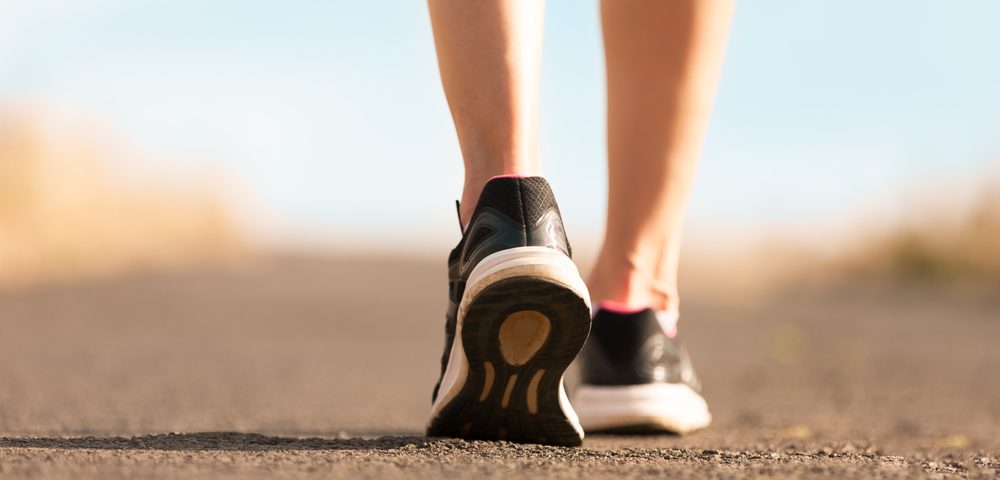Impaired Backward Walking Linked to Motor Symptoms, Fear of Falling in Early Parkinson’s, Korean Study Suggests

Backward walking is significantly impaired and associated with motor symptoms and fear of falling in newly diagnosed Parkinson’s patients, a small Korean study suggests.
These results point to backward walking parameters as potential biomarkers of Parkinson’s disease progression. The researchers called for future studies investigating the dynamics of backward walking in people with Parkinson’s, and its link to falls.
The study, “Backward Gait is Associated with Motor Symptoms and Fear of Falling in Patients with De Novo Parkinson’s Disease,” was published in the Journal of Clinical Neurology.
People with Parkinson’s are at a significant risk of falls due to gait (walking) and balance problems. Specifically, these patients show increased stride-to-stride variability and take shorter and slower steps.
While most gait studies in people with Parkinson’s have focused on walking forward, backward gait has been suggested to be even more impaired in these patients. It’s also been associated with freezing of gait, defined as not being able to start stepping forward, with no apparent cause.
Several studies have also shown that people with Parkinson’s have considerably more difficulties in walking while performing a secondary cognitive task, known as dual-task gait. Dual-tasking measures an individual’s ability to carry out a cognitive task — such as counting, or naming words that start with a particular letter — while engaging in a motor skill like walking.
However, since changes in walking parameters are closely associated with the progression of motor symptoms, most of what is known about walking difficulties in Parkinson’s patients comes from studies preformed in people at advanced stages of the disease.
Thus, understanding gait dynamics and difficulties in early-stage Parkinson’s disease remains largely unknown.
Now, a team of Korean researchers set out to determine which type of gait — forward, backward, or dual-task — was more strongly associated with motor symptoms or the risk of falling in people with de novo Parkinson’s disease, meaning they are newly diagnosed and still untreated.
The study involved 24 individuals with de novo Parkinson’s — 13 men and nine women, who had the disease for less than five years, were between 50 and 75 years old, and were able to perform various types of gaits. An additional 27 unaffected people, including 16 men and 11 women, were used as controls.
Clinical data for all participants was measured through several tests and scales, including the Korean version of the Montreal Cognitive Assessment, the Fear of Falling Measure (FFM) — a rating scale in which lower scores indicate greater fear of falling — and the Unified Parkinson’s Disease Rating Scale part II and III, which assesses motor symptoms.
The participants’ gait parameters were analyzed using the computerized GAITRite system with a 4.6-meters (16 foot) long, pressure-sensitive walkway mat. Each type of gait was tested 10 times while walking at a comfortable speed. Dual-task gait consisted of walking while subtracting serial sevens.
Results showed that de novo Parkinson’s patients had a slower walking speed and shorter stride in all three gaits, compared with unaffected people. However, backward gait showed the highest stride-to-stride variability in both stride time and length.
Dual-task gait also showed significant variability in stride length between the two groups of participants, while forward gait showed no significant differences.
When looking at the potential associations between gait speed, motor symptoms, and fear of falling in these patients, the team found that reduced backward gait speed was significantly associated with a wider range of motor symptoms. These included walking difficulties, bradykinesia (difficulty in body movement), postural instability, and total motor score. These individuals also had an increased fear of falling.
Reduced dual-task gait speed was specifically linked to worse bradykinesia and total motor score, while reduced forward gait speed was associated with reduced tremor score. That was consistent with previous studies suggesting that reduced gait speed is “more pronounced in non-tremor-dominant [Parkinson’s] patients,” the researchers said. None of these gaits’ speeds were associated with fear of falling.
“These results indicate that slow walking with a short stride is a clear feature of de novo PD regardless of the gait task being performed, and the earliest alterations of gait variability may first become apparent in [backward gait], followed by [dual-task gait] and then [forward gait],” the researchers said.
The team added that these findings suggest that backward walking speed is more strongly associated with the risk of falling and is “a potential surrogate marker for the progression of motor symptoms or gait impairment in PD.”
Future studies are required to confirm and better understand the association of backward gait and motor symptoms and to investigate the clinical relevance of stride-to-stride variability in the different types of gaits, the researchers said. They also called for additional studies into the link between backward walking and falls in people with Parkinson’s disease.






